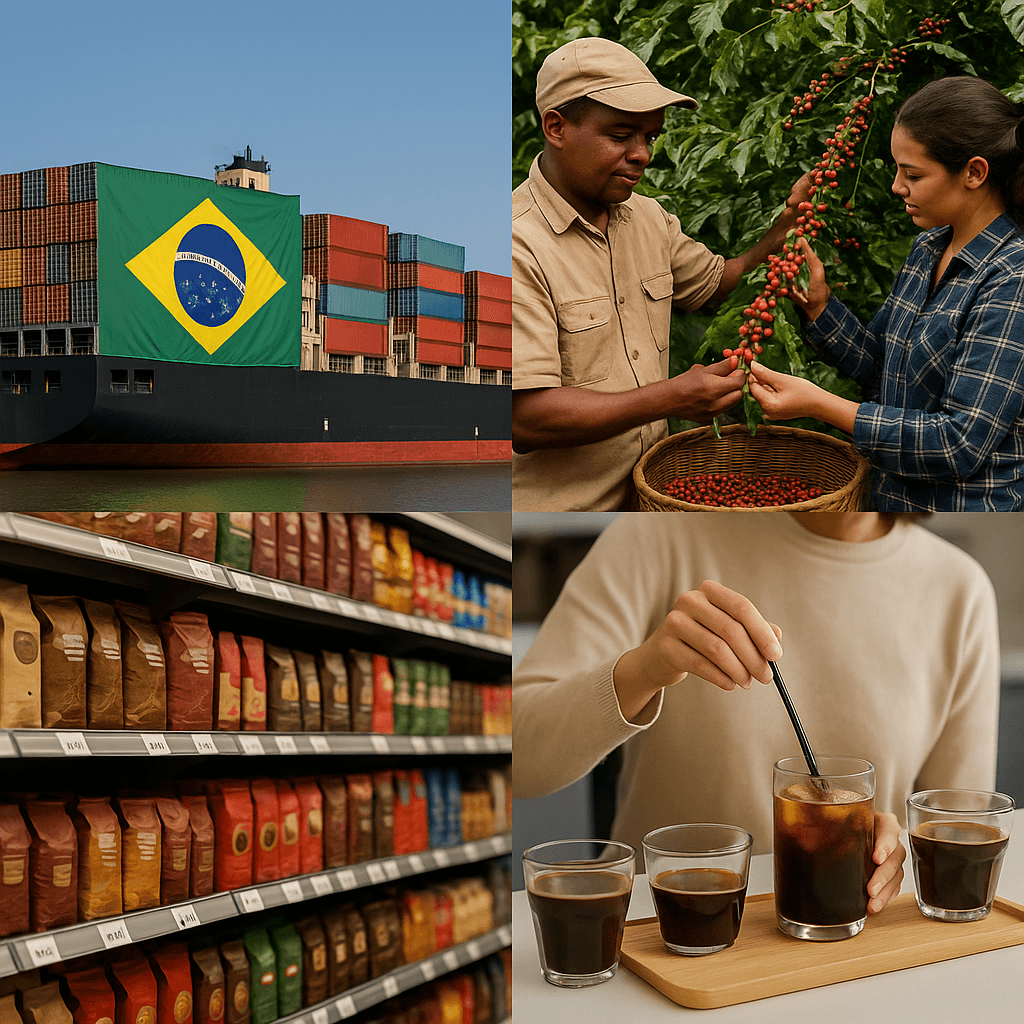As global coffee prices remain elevated, the distinction between specialty and commercial-grade coffee is becoming less clear. While specialty coffee has traditionally operated in a different space from commodity coffee, current market dynamics are bringing the two closer than ever before—raising new questions for consumers, producers, and roasters alike.
A Market in Flux
Over the past two years, coffee prices have surged due to a combination of poor harvests in Brazil and Vietnam, low global stockpiles, and increased speculation in commodities markets. In February 2025, green coffee prices hit a record $4.41 per pound, before stabilizing below $3 following improved weather conditions and better-than-expected forecasts.
Despite this slight correction, volatility remains high. Factors such as Middle East tensions affecting shipping routes and potential frost risks in Brazil continue to influence price movements. According to the UN Food and Agriculture Organization (FAO), consumers in the European Union and United States will feel the full effects of these spikes within the next 8 to 11 months, with the impact expected to last several years.
Consumer Behavior Shifts
Coffee brands, including major players like JM Smucker and JDE Peet’s, have already raised retail prices multiple times since 2024. Supermarkets are pushing back, but as brands aim to protect margins, further increases are anticipated. In Brazil, supermarket coffee prices have already risen by 40% this year alone.
Such developments are affecting consumer behavior. As prices rise, some consumers switch to cheaper options, reduce consumption, or stop buying coffee altogether—echoing trends seen in other markets, such as eggs in the U.S., where prices quadrupled and over a third of consumers stopped purchasing.
Specialty Coffee in the Spotlight
Although specialty coffee operates outside the C market, it cannot escape the ripple effects. The costs of logistics, green coffee, and financing affect all actors. As Albert Scalla of StoneX Group explains, “When the C market rises, everything goes up—including specialty.”
With commercial coffee prices approaching those of specialty, the value proposition of the latter is being reevaluated. Specialty has long justified its higher price through quality, transparency, and sustainability. But now, in a high-cost environment, many consumers may question: Why not pay a little more for significantly better coffee?
Sam Klein of Partners Coffee notes that for roasters relying on low-cost beans, rising input costs leave few options. “If your only value proposition is that your coffee is cheap, you’re in trouble when cheap isn’t cheap anymore,” he says.
However, not all producing regions are equally affected. Friso Miguel Spoor of Koffie Lente points out that countries like Ethiopia have set cherry prices that provide some insulation. Elsewhere, the pricing flexibility depends on the internal dynamics of cooperatives and exporters.
The Opportunity—and the Challenge
The narrowing price gap presents an opportunity for specialty roasters to attract new customers. By offering smaller package sizes or cost-effective blends, they can introduce quality to consumers who are used to commercial products. A $0.25 to $0.50 increase per cup may be tolerable for many customers if the product quality is noticeably superior.
But this strategy has limits. To cover rising costs, many specialty brands are also increasing prices—potentially discouraging price-sensitive buyers. Additionally, high C prices reduce the incentive for farmers to invest in high-quality lots, as commodity sales may offer easier profits with less effort.
Cash flow becomes another concern. Exporters face challenges in paying producers upfront without confirmed buyers, particularly when prices fluctuate rapidly.
Looking Ahead
Will consumers abandon coffee as prices rise? Not necessarily. But behavior will change. Some may shift to instant or supermarket brands. Others may embrace private labels, which are gaining ground in many markets. Yet, a segment might indeed upgrade to specialty coffee—especially if brands can clearly communicate the added value and experience they offer.
The specialty coffee sector, built on transparency, ethics, and craftsmanship, is at a turning point. Sam Klein sums it up: “It’s an interesting moment. We’ve always told consumers that they can get better coffee while also doing right by farmers. But when cheap coffee is no longer cheap, do we still believe in that mission?”


